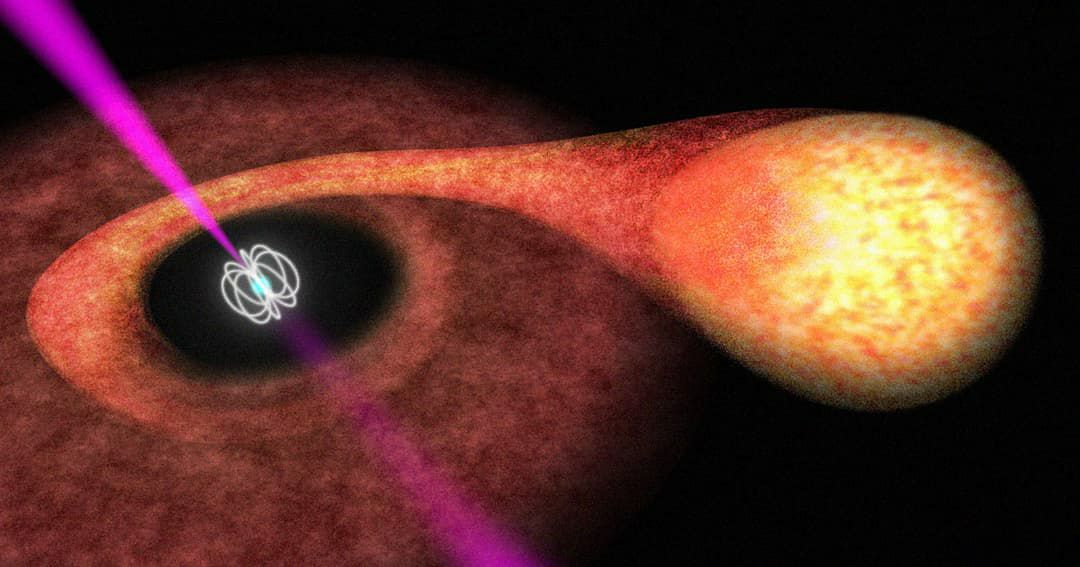“The heaviest neutron star devours its companion star.”
According to NASA astronomers, PSR J0952-0607 is the heaviest known neutron star, which is ripping apart its companion star while rotating at more than 700 rpm.
The neutron star was discovered in 2017 and is located about 3,000 light-years away in the constellation Sextans. Recent measurements indicate that it has a mass 2.35 times that of the Sun, making it the heaviest neutron star ever observed. Neutron stars are the remnants of supernova explosions of massive stars that have run out of fuel.
Despite their small size, only a few kilometers in diameter, neutron stars are extremely dense, with masses equal to or greater than that of the Sun, and are among the most unique objects in the universe, along with black holes. PSR J0952-0607 is the fastest rotating member of the neutron star family, completing 707 revolutions per second. Due to its unique properties, it can help scientists answer many questions about neutron stars.
PSR J0952-0607 is part of a binary system known as the black widow pulsar, named after the spider that famously eats its mates. Such systems include a neutron star consuming matter from its companion star. The neutron stars at the center of these systems are difficult to study because they are extremely faint.
Astronomers were able to estimate the mass of PSR J0952-0607 by focusing on the trail of its companion star, which has now shrunk to the size of a massive planet, about 20 times larger than Earth. . Using the W. M. Keck Observatory in Maunakea, Hawai’i, the team was able to obtain a spectrum of visible light emitted from the disappearing star. By comparing the spectra with those of similar stars, they were able to measure the companion star’s orbital velocity and calculate the neutron star’s mass.
Astronomers F. Alex Filippenko, professor of astronomy at the University of California, Berkeley, and his colleague, Roger W. Romani, professor of astrophysics at Stanford University, have studied more than a dozen systems black widow binaries in recent years, but only six of them contained a companion star bright enough for them to calculate the neutron star’s mass. The research results have been published in the Arxiv database.
Hits: 0







